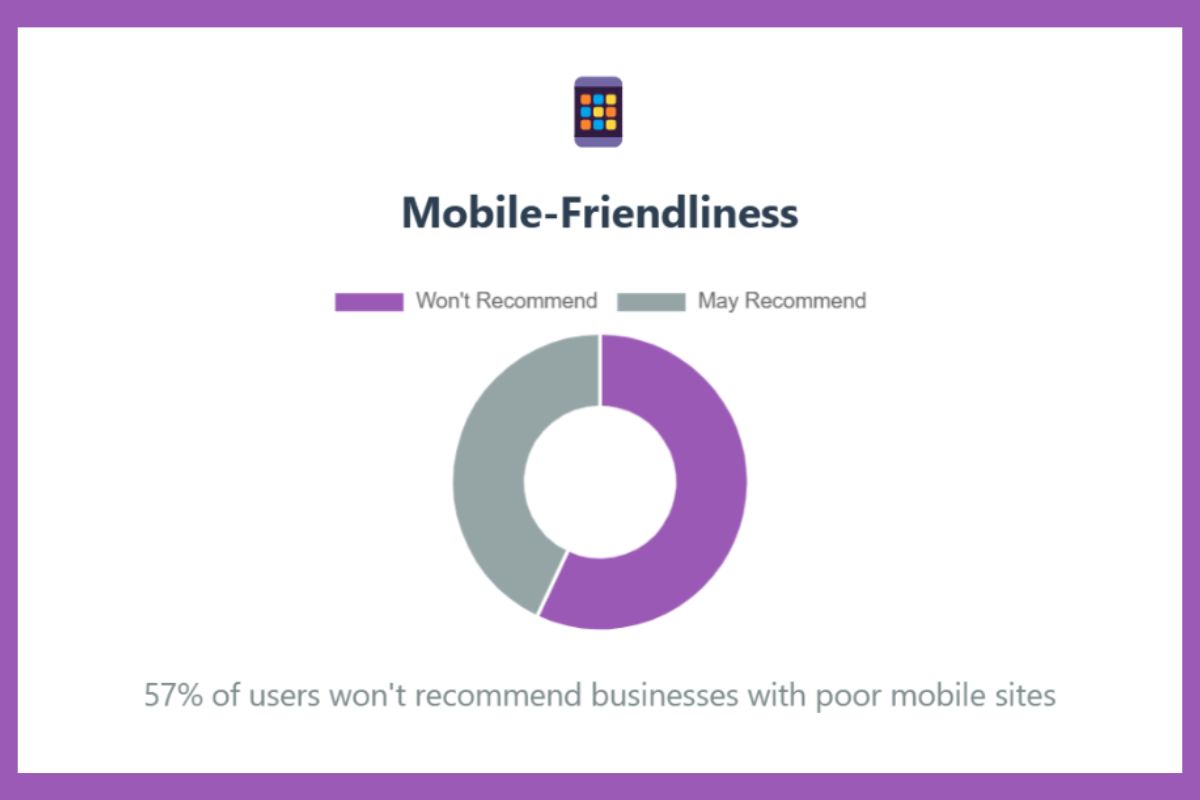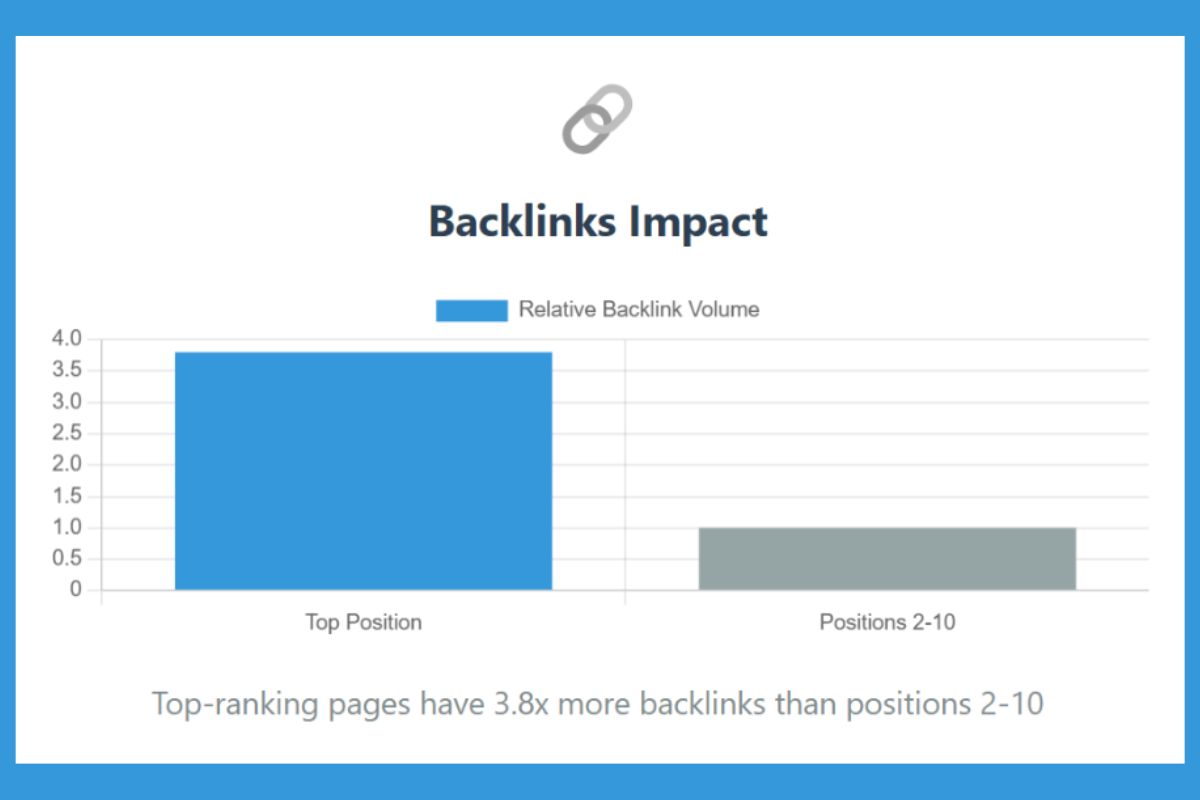Let’s be honest—your website’s SEO ranking in 2025 can make or break your business. With Google processing over 8.5 billion searches daily, millions are searching for exactly what you offer, but a poor search engine ranking position means they’ll find competitors instead.
Here’s the reality: over 90% of people never scroll past Google’s first page, making top rankings essential for business growth.
So, what is SEO ranking? Simply put, it’s your website’s position when people search for terms related to your business. Higher positions mean more visibility, clicks, and customers.
Google uses 200+ signals to determine rankings—from site speed to backlinks. The good news? You don’t need to master them all. Focus on the most important SEO ranking factors for dramatic improvements.

This guide covers the SEO ranking factors that actually matter in 2025, how Google’s algorithms work, and practical strategies you can implement immediately for consistent, long-term growth.
What is SEO Ranking?
Think of SEO ranking as your website’s report card for any given search term. When someone types “best solar panels” into Google and your site appears as the second result on page one, your search engine ranking position for that keyword is #2. Pretty straightforward, right?
But here’s what makes it tricky—these rankings aren’t set in stone. They’re constantly shifting as Google’s algorithms evaluate your site against competitors. One day you might be #3, the next day #7, depending on factors like content updates, new backlinks, or changes in user behavior.
Why should you care about these fluctuations? Because the difference between ranking #1 and #11 is often the difference between thriving and barely surviving online. The top three organic results grab more than half of all clicks, while websites languishing on page two might as well be invisible.
Understanding what are SEO ranking factors isn’t just technical knowledge—it’s business intelligence that directly impacts your bottom line.
How Google Rankings Work
Google isn’t playing favorites or making random decisions about who ranks where. They follow a methodical three-step process that happens billions of times every day:
Step 1: Crawling: Imagine Google has an army of digital scouts called “bots” or “spiders.” These scouts continuously explore the internet, following links from page to page, reading content, and discovering new information. They’re incredibly thorough—crawling billions of pages daily.
Step 2: Indexing: Once these scouts find your content, Google stores it in its massive digital library (the index). Think of it as the world’s largest filing system, where every webpage gets categorized and tagged for instant retrieval when someone searches.
Step 3: Ranking: This is where the magic happens. When someone types a query into Google, the algorithm instantly evaluates all relevant indexed pages using over 200 ranking factors in SEO. It’s like having a super-intelligent librarian who can instantly find and rank the most relevant books for any question.

What’s really fascinating is how Google has evolved to understand user intent. Tools like RankBrain and BERT don’t just match keywords—they interpret what people actually want when they search. Meanwhile, Core Web Vitals measure real user experiences, ensuring fast, responsive, and stable websites get priority.
The bottom line? Google rewards websites that genuinely help users, not those trying to game the system.
Key SEO Ranking Factors (2025)
Let’s dive deep into the SEO ranking factors that will make or break your success in 2025. While Google considers hundreds of signals, these are the game-changers you need to master:
High-Quality Content: The Foundation of Everything
Content isn’t just king—it’s the entire kingdom. Google’s algorithms have become incredibly sophisticated at recognizing and rewarding truly valuable content. But what does “high-quality” actually mean in 2025?
Depth and Comprehensiveness Matter More Than Ever
Gone are the days when you could rank with thin, 300-word blog posts. Today’s top-ranking content thoroughly explores topics, answers related questions, and provides genuine value. Think of your content as the definitive resource someone would bookmark and share with friends.
I’ve seen websites jump from page 3 to page 1 simply by expanding their existing articles with detailed examples, case studies, and frequently asked questions. The sweet spot seems to be 1,500-2,500 words, but remember—relevance trumps word count every time.
Freshness Signals Authority
Google loves content that stays current. Regularly updating your existing posts signals that you’re actively maintaining your site and keeping information accurate. This doesn’t mean rewriting everything monthly, but adding new sections, updating statistics, or refreshing examples can work wonders.
Structure Makes Content Digestible
Your content might be brilliant, but if it’s presented as a wall of text, both users and search engines will struggle. Use H2 and H3 headings to break up sections, incorporate bullet points for easy scanning, and keep paragraphs short and punchy.
Search Intent Alignment Is Non-Negotiable
This is where many websites fall short. Your content format must match what users expect when they search. If someone searches “how to change oil,” they want a step-by-step guide, not a product page selling motor oil. Misaligning with search intent is like answering a different question than what was asked.

Backlinks and Domain Authority: Your Website’s Reputation Score
Think of backlinks as votes of confidence from other websites. When a reputable site in your industry links to your content, they’re essentially telling Google, “This resource is worth recommending.”
Quality Over Quantity, Always
I’ve seen websites with 50 high-quality backlinks outrank competitors with 500 low-quality ones. One link from an authoritative industry publication carries more weight than dozens from random directories or sketchy websites.
Focus your efforts on earning links from sites that your ideal customers actually read and trust. This might mean creating resources so valuable that industry leaders can’t help but reference them, or building genuine relationships with other professionals in your field.
Domain Authority: Your Overall Trust Score
Your domain authority reflects Google’s overall confidence in your website. It’s built over time through consistent quality content, legitimate backlinks, and positive user signals. While you can’t directly control this metric, focusing on the other ranking factors for SEO naturally improves your domain authority.
Avoiding Toxic Links
Not all backlinks are beneficial. Links from spam sites, link farms, or irrelevant websites can hurt your rankings. Regular backlink audits help identify and disavow harmful links before they impact your performance.
Search Intent and Relevance: Speaking Google’s Language
Google’s BERT and RankBrain algorithms have revolutionized how search engines understand human language. They don’t just match keywords—they interpret the meaning behind searches and the context of your content.
Understanding the Buyer’s Journey
Different searches represent different stages of the customer journey. Someone searching “what is SEO” is in research mode, while “hire SEO consultant near me” indicates purchase intent. Your content must align with where users are in their decision-making process.
Semantic Keywords Build Context
Modern SEO isn’t about stuffing your target keyword everywhere. Instead, use related terms, synonyms, and naturally occurring phrases that reinforce your topic’s relevance. If you’re writing about “digital marketing,” naturally incorporating terms like “online advertising,” “social media promotion,” and “content strategy” helps Google understand your content’s scope.
Technical SEO: The Foundation That Everything Else Builds Upon
Even the most brilliant content won’t rank if your website’s technical foundation is shaky. These search engine optimization ranking factors operate behind the scenes but have a massive impact:
Core Web Vitals: Google’s Performance Report Card
Google measures how real users experience your website through Core Web Vitals:
- Largest Contentful Paint (LCP): How quickly your main content loads
- First Input Delay (FID): How responsive your site feels to user interactions
- Cumulative Layout Shift (CLS): How stable your page layout remains while loading
These aren’t just technical metrics—they directly impact whether users stay on your site or bounce back to search results.
HTTPS Security Is Mandatory
If your website doesn’t have an SSL certificate (the little lock icon in browsers), you’re fighting an uphill battle. Google explicitly favors secure sites, and users increasingly distrust websites without proper security. The difference between HTTP vs HTTPS isn’t just technical—it’s a matter of trust, rankings, and protecting your visitors.
Crawlability: Helping Google Navigate Your Site
Your XML sitemap and robots.txt files are like GPS systems for Google’s crawlers. They help ensure important pages get discovered and indexed while keeping crawlers away from irrelevant sections like admin areas.
Schema Markup: Speaking Google’s Preferred Language
Schema markup is code that helps search engines understand your content’s context. It can earn you rich snippets—those enhanced search results with star ratings, prices, or other additional information that make your listing stand out.

Mobile Friendliness: No Longer Optional
With Google’s mobile-first indexing, your website’s mobile version is now the primary version Google evaluates. This shift reflects reality—over 60% of searches now happen on smartphones.
Responsive Design Is Just the Starting Point
Your site must be mobile-friendly to look and function beautifully on every screen size, from massive desktop monitors to compact smartphones. But responsive design alone isn’t enough anymore.
Mobile Page Speed Matters More
Mobile users are even less patient than desktop users. If your mobile site takes more than 3 seconds to load, you’re losing potential customers faster than you can count them.
Touch-Friendly Navigation
Buttons need to be large enough for fingers, menus should be easy to navigate with thumbs, and forms must be simple to complete on small screens. These seemingly minor details significantly impact user experience and, consequently, your rankings.

User Experience Signals: What Really Keeps Google Happy
Google has become remarkably good at measuring how real users interact with websites. These behavioral signals are among the most important SEO ranking factors because they directly reflect user satisfaction:
Click-Through Rate (CTR): Your First Impression Score
When your listing appears in search results, how often do people click on it? Compelling titles and meta descriptions that accurately represent your content can dramatically improve CTR, which sends positive signals to Google.
Dwell Time: The Engagement Indicator
How long do visitors stay on your page after clicking from search results? If people immediately bounce back to Google, it suggests your content didn’t meet their expectations. Longer dwell times indicate satisfied users who found what they were looking for.
User Engagement Metrics
Pages with high engagement—comments, shares, time on page, pages per session—tend to rank better because they demonstrate genuine value to users.
Strategic Keyword Optimization: Finding the Sweet Spot
Keyword optimization remains one of the key SEO ranking factors, but the approach has evolved significantly. It’s no longer about cramming keywords everywhere; it’s about strategic, natural placement.
Prime Real Estate for Keywords
Your primary keyword should appear in your title tag, H1 heading, and within the first 100 words of your content. This tells both users and search engines exactly what your page is about.
LSI Keywords Add Depth
Latent Semantic Indexing (LSI) keywords are related terms that help Google understand your content’s context. For a page about “apple pie recipes,” LSI keywords might include “baking,” “dessert,” “crust,” and “filling.”
Keyword Density vs. Natural Flow
Forget about hitting specific keyword density percentages. Instead, focus on writing naturally while ensuring your topic and related terms appear throughout your content in meaningful ways.
For more detailed guidance on this crucial aspect, check out our comprehensive keywords research guide.
On-Page SEO Ranking Factors: What You Control Directly
These are the elements you have complete control over, making them excellent starting points for SEO improvements:
Title Tags and Meta Descriptions
Your title tag is like a book’s cover—it needs to be compelling enough to make people want to click while accurately representing your content. Meta descriptions, while not direct ranking factors, significantly impact click-through rates.
Internal Linking Strategy
Strategic internal links help spread authority throughout your site while improving navigation for users. They’re like highways connecting different neighborhoods of your website, helping both users and search engines discover your content.
Image Optimization
Every image should have descriptive alt text that helps visually impaired users and provides context to search engines. Additionally, compressed image files improve page load speeds.
Technical Factors
Technical performance plays a crucial role in on-page SEO. Website speed directly impacts user satisfaction, as slow-loading pages can lead to higher bounce rates. Metrics evaluate critical factors such as loading performance (Largest Contentful Paint), interactivity (First Input Delay), and visual stability (Cumulative Layout Shift). Furthermore, a secure connection (HTTPS) fosters trust with users and is a recognized ranking factor, making SSL certificates essential for any website. Prioritizing these technical aspects enhances both user experience and search engine visibility.
By addressing these on-page SEO ranking factors, you can create a seamless user experience that aligns with search engine requirements, thereby improving your website’s overall performance.
Off-Page SEO Ranking Factors: Building Your Reputation
Success in SEO isn’t just about what happens on your website—it’s also about how the broader internet perceives your brand:
Social Signals and Brand Mentions
While social media shares don’t directly impact rankings, they increase visibility and can lead to more backlinks and brand searches. When people mention your brand online (even without linking), it builds authority signals.

Local SEO Ranking Factors
For businesses serving local markets, consistent NAP (Name, Address, Phone) information across online directories, an optimized Google Business Profile, and positive customer reviews are crucial for appearing in local search results and the coveted “Map Pack.”

Emerging Trends and Future-Proofing
The SEO landscape continues evolving rapidly. Here are the factors that influence SEO success in 2025 and beyond:
E-E-A-T: The Trust Framework
Experience, Expertise, Authoritativeness, and Trustworthiness have become especially critical for YMYL (Your Money or Your Life) topics like health, finance, and safety. Google wants to ensure information in these sensitive areas comes from genuinely qualified sources.
Video Content Integration
Google increasingly ranks video content, including YouTube videos and Shorts, in traditional search results. Incorporating video into your content strategy can provide additional ranking opportunities.
AI-Generated Content Considerations
While AI can assist content creation, it needs human oversight to ensure quality, accuracy, and the kind of genuine insight that users value and search engines reward.
Building a strong off-page SEO strategy not only improves your rankings but also reinforces your website’s reputation as a reliable source of information. To ensure you’re leveraging the best strategies, consider learning how to choose an SEO company that aligns with your goals.
Monitoring Your Search Engine Ranking Position
Creating great content and optimizing your site is only half the battle—you need to track your progress and adjust your strategy based on real data. Here’s how to stay on top of your SEO performance:
Essential Tracking Tools and Platforms
Google Analytics and Search Console: Your Free Foundation
These Google-provided tools should be your starting point. Search Console shows exactly which keywords bring visitors to your site, while Analytics reveals how those visitors behave once they arrive. Together, they provide invaluable insights into your SEO performance.
The best part? They’re completely free and come directly from Google, giving you the most accurate picture of how the search engine sees your site.
Advanced SEO Platforms for Deeper Insights
Tools like SEMrush and Ahrefs offer features that Google’s free tools don’t provide—competitor analysis, keyword difficulty scores, backlink monitoring, and rank tracking across multiple search engines. While they require investment, the insights they provide can significantly accelerate your SEO progress.
WordPress-Specific Solutions
If you’re running a WordPress site, plugins like MonsterInsights bridge the gap between complex analytics data and actionable insights. They present your SEO metrics in easy-to-understand dashboards right within your WordPress admin area.
Key Metrics That Actually Matter
Not all metrics are created equal. Focus on these indicators that directly correlate with business success:
Organic Traffic Growth
This is the ultimate measure of SEO success—more qualified visitors finding your site through search engines. Track both overall growth and growth for specific high-value keywords.
Keyword Position Improvements
While traffic is the end goal, tracking your search engine ranking position for target keywords helps you understand what’s working and what needs adjustment. Focus on positions 1-20, as rankings beyond that rarely drive meaningful traffic.
Click-Through Rates from Search Results
Even if you rank well, low click-through rates suggest your titles and meta descriptions need improvement. This metric helps you optimize for more than just ranking position.
Conversion Rates from Organic Traffic
The most important question isn’t just “Are people finding us?” but “Are the right people finding us and taking action?” Track how SEO traffic converts compared to other channels.
Making Data-Driven Adjustments
Regular monitoring isn’t just about celebrating wins—it’s about identifying opportunities and problems before they become critical:
Monthly Performance Reviews
Set aside time each month to review your key metrics, identify trends, and adjust your strategy accordingly. Look for patterns in seasonal fluctuations, algorithm updates, or competitive changes.
Competitive Analysis
Your rankings don’t exist in a vacuum—they’re relative to what competitors are doing. Regular competitive analysis helps you understand why rankings might be shifting and reveals new opportunities.
Technical Health Audits
Core Web Vitals, crawl errors, and other technical issues can suddenly impact rankings. Monthly technical checkups help catch and fix problems before they hurt your performance.
Content Performance Assessment
Some content pieces will inevitably perform better than others. Analyze your top-performing pages to understand what makes them successful, then apply those insights to underperforming content.
FAQ
What are the most important SEO ranking factors?
The most critical factors include high-quality content, strong backlinks, and mobile-friendliness. Content that aligns with user search intent, combined with a robust off-page SEO strategy, significantly boosts your rankings. Additionally, optimizing for technical SEO elements like site speed and HTTPS is essential.
How do I improve my SEO ranking quickly?
Quick improvements often come from optimizing for on-page SEO ranking factors. This includes updating your content with relevant keywords, improving website speed, and addressing mobile-friendliness. For businesses targeting local audiences, focusing on local SEO ranking factors, such as optimizing your Google Business Profile, can yield faster results.
What is the role of user engagement in SEO?
User engagement metrics like time on page, CTR, and bounce rate provide signals to Google about your site’s quality and relevance. A highly engaged audience indicates that your content is valuable, which can positively affect your rankings. Improving user experience through seamless navigation, faster load times, and compelling content can enhance these metrics.
What strategies can be used to build high-quality backlinks?
Backlinks are a cornerstone of off-page SEO, but the most effective strategies for building high-quality links vary depending on your niche and goals.
How does Google adapt its ranking factors to new search trends?
Google’s algorithms evolve continuously to reflect user behavior and search trends. Understanding how these changes impact ranking factors can make a significant difference in maintaining visibility. These common questions reflect the core principles of SEO success. By addressing the factors that affect SEO ranking, you can ensure steady progress in your search engine performance.
Conclusion
Mastering google SEO ranking factors in 2025 isn’t about chasing algorithm updates—it’s about creating genuine value while ensuring flawless technical performance.
The most important SEO ranking factors we’ve covered—content quality, backlinks, technical SEO, and user experience—work as an integrated system. Success requires balance across all areas, not excellence in just one.
Focus on understanding your audience, creating helpful content, and building exceptional user experiences. This user-first approach naturally aligns with what search engines reward.
Every business is unique, so the essential SEO ranking factors in this guide need tailoring to your specific industry and audience.
If you need expert guidance for your SEO strategy, Indexed Zone SEO can help develop and implement solutions that drive sustainable growth.
Remember: successful SEO means connecting with the right people at the right moment. Focus on SEO factors for ranking a website that prioritize user value, and rankings will follow.



